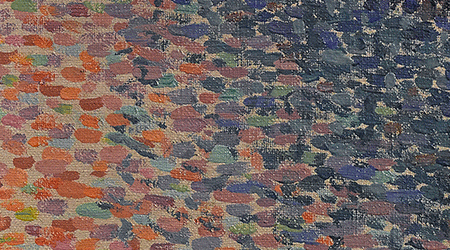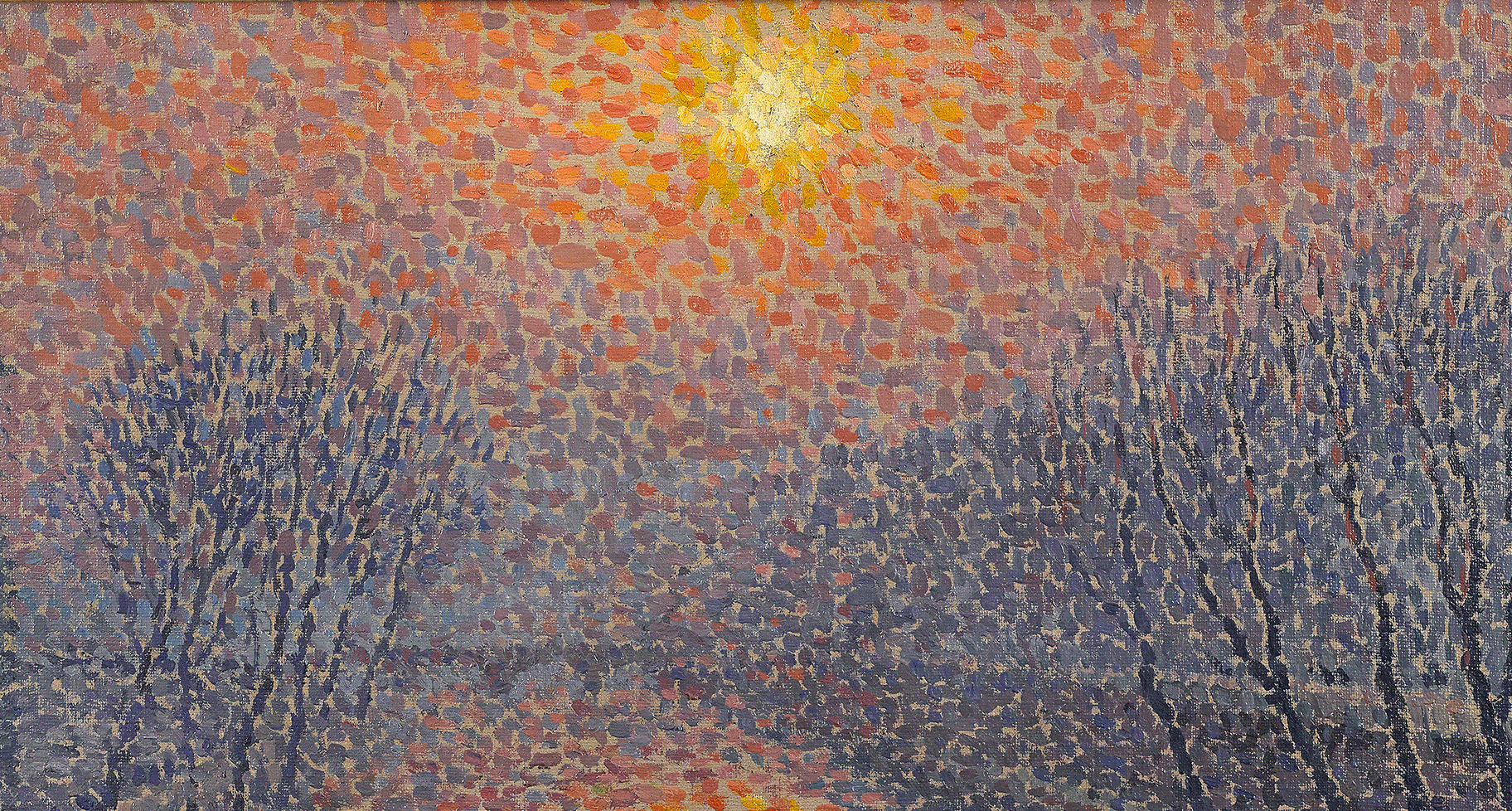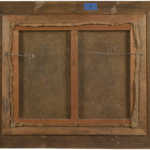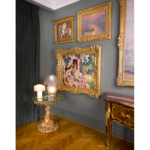This post-Impressionist canvas depicts the sun setting over a canal. The soft light of dusk is evoked by delicate dots of emerald, lilac, blush-pink, and amber, which appear to shimmer on the surface of the canvas. The foreground image displays five barges resting upon the water’s surface; the sun blazes at the top of the image, casting light on the trees, towpaths, and church. In keeping with the Post-Impressionist tradition, which sought to enhance the Impressionist project with new techniques, the artist produces a painting alive with a sense of movement.
Jacques Martin-Ferrieres was born in 1893 to Henri Martin, the great second generation Impressionist painter. He became known as a painter of portraits and landscapes after periods of study under Cormon, Ernest Laurent, and, of course, Henri Martin. He exhibited regularly in Paris at the Salon des Artistes Français, and at the 1920 Salon he received a honourable mention, a silver medal in 1923, and a travel scholarship in 1924. He received the national prize in 1925, before finally being awarded a gold medal in 1928. He was also awarded The Legay-Lebrun prize (Prix de L’Institut). His style can be summarised briefly by his use of thick impasto which created a surface of great vitality and a wonderful basis for his experimentation with the effects of light.
Martin-Ferrières’s works are held in several major museum collections, including the Boca Raton Museum of Art and the Musée Malraux, Le Havre.

















